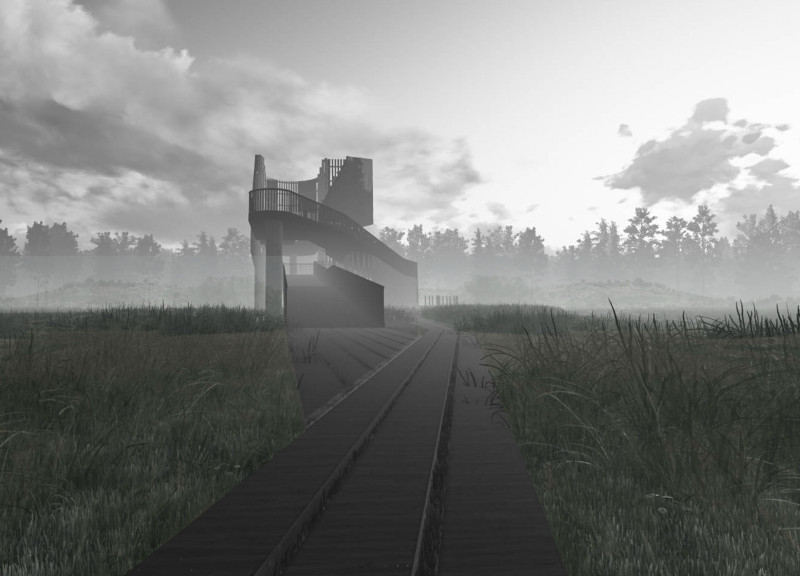5 key facts about this project
The Observation Tower in Kemeri National Park enhances the experience of visitors in a stunning natural environment. Located in a forested area, the tower serves as a lookout point that encourages exploration and a deeper connection with the landscape. The design concept focuses on immersing people in nature, using a sequence of elevated viewpoints that allow for different perspectives of the surrounding area.
Design Concept
The concept behind the Observation Tower revolves around the idea of a journey through the forest. A clearly marked pathway leads visitors on an upward trajectory. As they ascend via ramps, they are guided toward two distinct platforms, each offering a unique view. This elevation not only ensures great sightlines of the area but also invites moments of pause and reflection amid nature.
Atmospheric Engagement
The design engages with light and shadow in a meaningful way. The form of the tower creates interesting patterns of light that change throughout the day. This connection to natural light enhances the experience people have within the forest, allowing them to feel the changing atmosphere as they move through the space.
Material Considerations
While specific materials are not detailed in the presentation texts, the design emphasizes sustainability and a low environmental impact. The platforms and ramps allow the structure to blend with its surroundings, maintaining respect for the natural landscape. The careful integration ensures that the tower fits into the forest without dominating it, highlighting the intention to create a thoughtful intervention in the environment.
Experiential Focus
The tower is intended as a place for calm and contemplation. It encourages visitors to connect with the forest while providing shelter from wind and rain. The layout creates a peaceful atmosphere, where people can appreciate the beauty of Kemeri National Park. The observation points offer intimate connections with nature, allowing moments of quiet reflection in a serene setting.


























